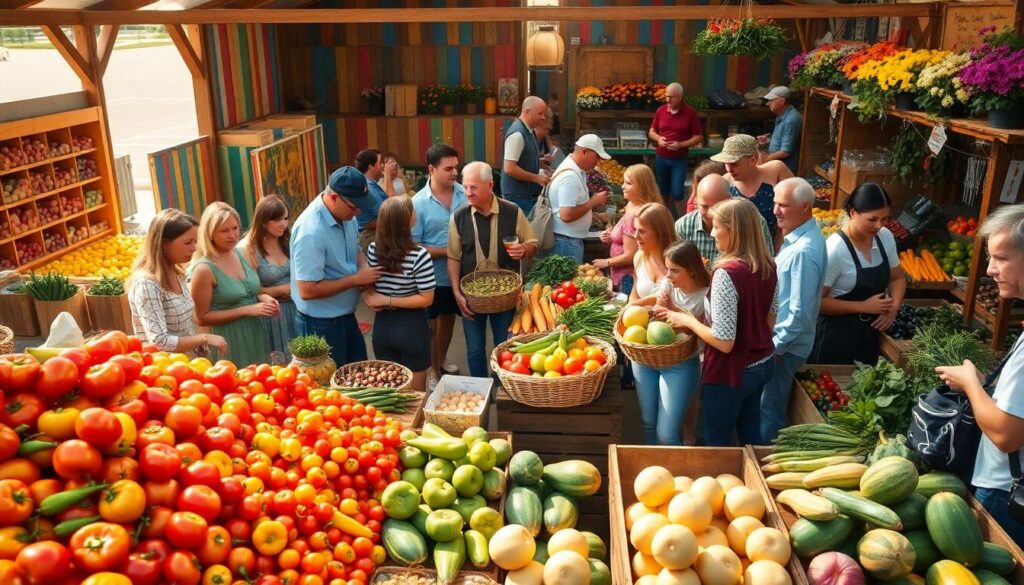
The farm-to-table movement development has surprised the culinary world. In recent years, farm-to-table restaurants have surged, reflecting a growing interest in fresh, locally sourced food. A report indicated that consumer spending on organic and local food reached nearly $50 billion in 2022, showcasing this trend’s rising popularity. Farm-to-table goes beyond just serving food; it emphasizes quality, sustainability, and connection to local producers. This movement is not just a fad but a commitment to healthier eating, environmental responsibility, and supporting local economies.
The Driving Forces Behind Farm-to-Table’s Popularity
Consumer Demand for Transparency and Quality
More and more, consumers are choosing where their food comes from. Studies show that 70% of shoppers prefer organic or locally sourced products. This shift is largely due to a desire for quality and transparency in food sourcing. Many seek to understand the impact of their food choices, especially regarding food miles—the distance food travels from farm to table. The longer the distance, the more prominent the carbon impression. When you eat locally, you’re eating fresh and reducing environmental impact.
The Environmental Impact of Industrial Agriculture
Industrial farming comes with significant drawbacks. From pesticide use to soil degradation, conventional agriculture often harms the environment. Research shows sustainable farming practices lead to improved soil health, enhanced biodiversity, and a reduction in carbon emissions. A report from the Food and Agriculture Organization indicates that switching to sustainable farming could lower greenhouse gas emissions by over 30%. More people are recognizing that farm-to-table offers an eco-friendly alternative that benefits both health and the planet.
The Rise of the “Foodie” Culture
Social media has ignited a new wave of food enthusiasts. Platforms like Instagram and TikTok are filled with food content, making local dining experiences more popular than ever. Food blogging and influencers highlight unique culinary experiences, encouraging consumers to explore farm-to-table dining. This trend also fuels an increased interest in food education, as people want to know more about what they eat and where it comes from.
The Benefits of Farm-to-Table Dining: Beyond the Plate
Health Benefits of Fresh, Locally Sourced Food
Eating fresh produce directly from local farms offers numerous health benefits. Fresh fruits and vegetables are often more nutritious than those transported long distances. Studies indicate that food loses nutrients over time, so local sourcing means better taste and quality. Nutritionists emphasize that consuming seasonal, locally grown foods reduces exposure to harmful pesticides. Incorporating more of these foods can lead to a healthier diet.
Economic Benefits for Local Communities
The farm-to-table movement also strengthens local economies. By purchasing from local farmers, restaurants can help sustain rural communities. This support leads to job creation and income stability for farmers and their families. For instance, programs like farmers’ markets have proven successful in increasing sales for local farmers while providing fresh produce to the community.
Environmental Sustainability and Reduced Carbon Footprint
Shorter food supply chains mean lower carbon emissions. Studies show that eating locally can reduce a person’s food-related carbon footprint by up to 50%. Additionally, supporting sustainable practices can lead to better biodiversity and healthier ecosystems. Eating from local farms means that not only do communities benefit, but the environment does as well.
Challenges and Obstacles Faced by the Farm-to-Table Movement
Seasonality and Availability of Ingredients
One of the biggest challenges for farm-to-table restaurants is the seasonality of ingredients. Produce availability fluctuates, which can make menu planning difficult. Restaurants often adapt by creating seasonal menus, showcasing what’s fresh and in stock. This ensures that diners enjoy the best local produce while celebrating the season’s bounty.
Cost and Pricing of Farm-to-Table Food
Farm-to-table dining often comes with a higher price tag than conventional options. This can be a barrier for many consumers. However, some restaurants are finding ways to balance cost and accessibility. Offering smaller portion sizes or highlighting value menus can help customers enjoy fresh, local food without breaking the bank.
Scaling Up Production and Maintaining Quality
As demand increases, maintaining quality while scaling operations can be tough. Many farm-to-table businesses struggle to find reliable local sources of food. Successful operators often build strong relationships with local farmers, ensuring consistent quality and supply. This collaboration not only supports farmers but also enhances the trust between restaurants and their suppliers.
The Future of Farm-to-Table: Trends and Innovations
Technology and Innovation in Sustainable Agriculture
Technology is playing a significant role in advancing sustainable agricultural practices. Farms are utilizing innovative techniques such as vertical farming and hydroponics to grow food more efficiently. These methods help produce fresh ingredients while reducing environmental impact, ensuring that farm-to-table will continue to thrive.
The Growing Role of Urban Farming and Community Gardens
Urban farming initiatives are rising in cities, providing fresh produce to local communities. Community gardens not only supply food but also foster a sense of community and cooperation. These gardens allow people to connect with where their food comes from, increasing awareness and appreciation for local farming.
Government Policies and Support for Sustainable Agriculture
Government support is critical for the growth of farm-to-table initiatives. Policies promoting sustainable agriculture and funding for local farms help create a more robust food system. Programs that incentivize restaurants to source locally can increase participation in the farm-to-table movement and encourage sustainable practices.
Conclusion: Embracing a Sustainable Food Future
Farm-to-table dining is more than a passing trend; it’s a movement rooted in health, sustainability, and community support. By choosing to dine locally, consumers invest in their health and contribute to healthier communities and environments. Everyone can take action by exploring local restaurants, visiting farmers’ markets, or even starting a home garden. The future of food is bright with